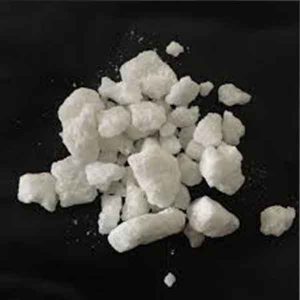Description
3-Methylfentanyl
3-Methylfentanyl (3-MeFentanyl) is a powerful synthetic opioid that is closely related to fentanyl. It is a highly addictive and dangerous drug that has gained significant attention in recent years due to its widespread misuse and abuse. This document aims to shed light on the history, effects, risks, and legal status of 3-MeFentanyl, as well as provide recommendations for prevention, treatment, and harm reduction.
History and Background
3-MeFentanyl was first synthesized in the 1960s as a pharmaceutical analgesic. However, its abuse potential was not recognizes initially, and it was approving for clinical use only in the late 20th century. Its similarity to fentanyl, a synthetic opioid already known for its high potency and potential for misuse, raised concerns about the safety and efficacy of 3-MeFentanyl.
Effects
3-MeFentanyl has similar effects to fentanyl, which are primarily mediated through binding to opioid receptors in the brain. These effects include euphoria, sedation, analgesia, respiratory depression, and constipation. 3-MeFentanyl is reported to be more potent than fentanyl, making it even more dangerous and potentially lethal when misused.
Risks and Side Effects
3-MeFentanyl use carries numerous risks, including overdose, respiratory depression, and death. It is highly addictive and can lead to physical dependence, making it difficult for users to stop using the drug without experiencing withdrawal symptoms. Additionally, long-term use can lead to liver and kidney damage, cardiovascular issues, and cognitive impairment.
Legal Status
3-MeFentanyl is illegal in most countries, including the United States. It has been classified as a Schedule I controlled substance by the Drug Enforcement Administration (DEA) due to its high potential for abuse and lack of medical use. The production, distribution, and possession of 3-MeFentanyl are punishable offenses under federal law.
Recommendations
1. Prevention: Education and awareness about the dangers of 3-MeFentanyl are crucial for prevention. Individuals should avoid using fentanyl analogues, such as 3-MeFentanyl, and seek help from healthcare professionals if they or their loved ones are struggling with substance abuse.
2. Treatment: Individuals who are addicted to 3-MeFentanyl or other substances should seek professional help through addiction treatment programs. These programs offer a combination of counseling, therapy, and medication-assisted treatments to help alleviate withdrawal symptoms and reduce the risk of relapse.
3. Harm Reduction: Harm reduction strategies, such as naloxone distribution and drug checking services, can help save lives and prevent overdoses. By equipping individuals with naloxone, an opioid overdose reversal medication, and providing them with information about potentially adulterated drugs, we can reduce overdose deaths and improve overall safety.
Conclusion
3-MeFentanyl is a synthetic opioid on the rise, posing significant risks to individuals and public health. It is essential to stay informed, understand the risks, and take proactive measures to prevent its misuse and mitigate its effects. By implementing prevention strategies, providing treatment resources, and adopting harm reduction measures, we can work together to combat the threat posed by 3-MeFentanyl and other synthetic opioids.





Reviews
There are no reviews yet.